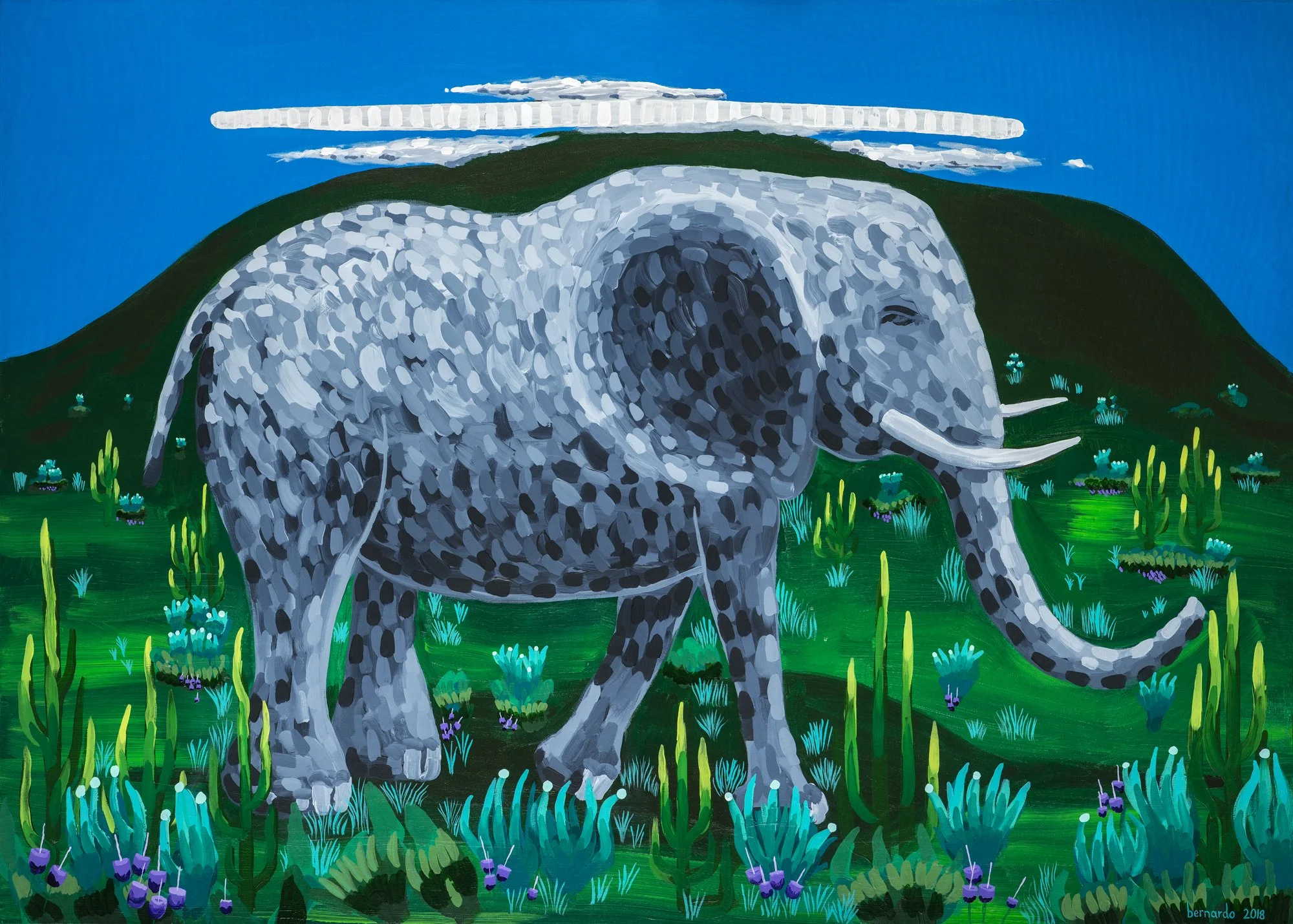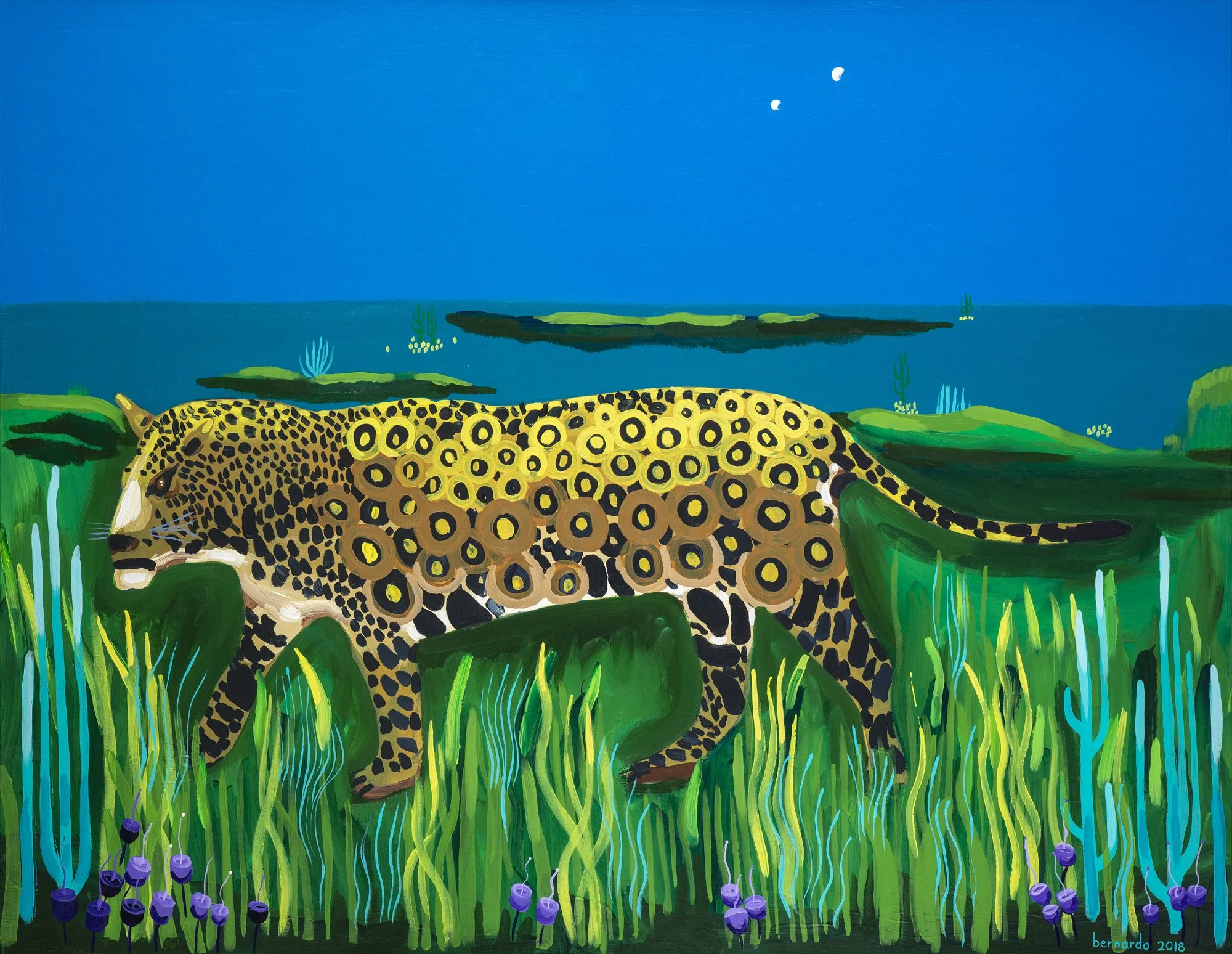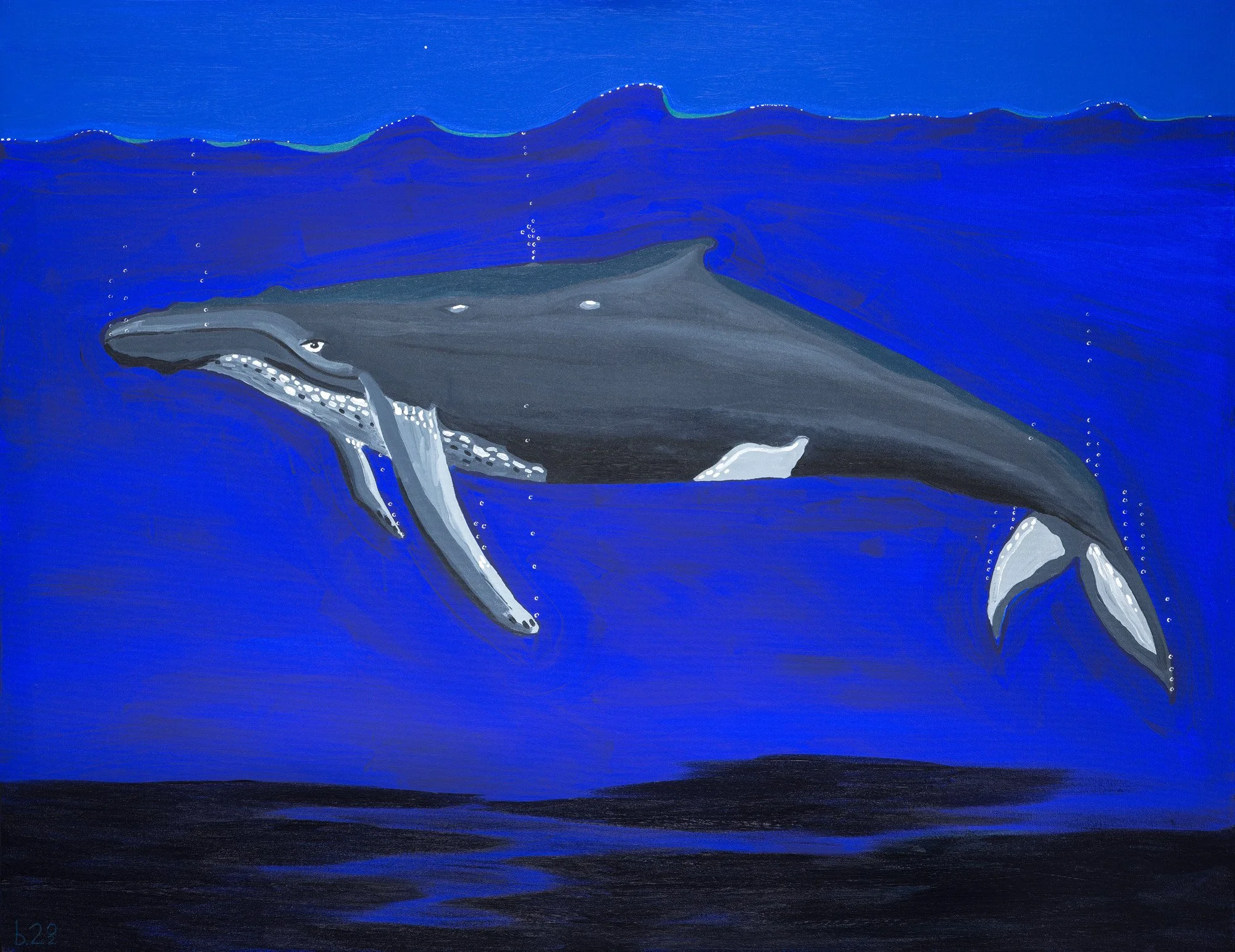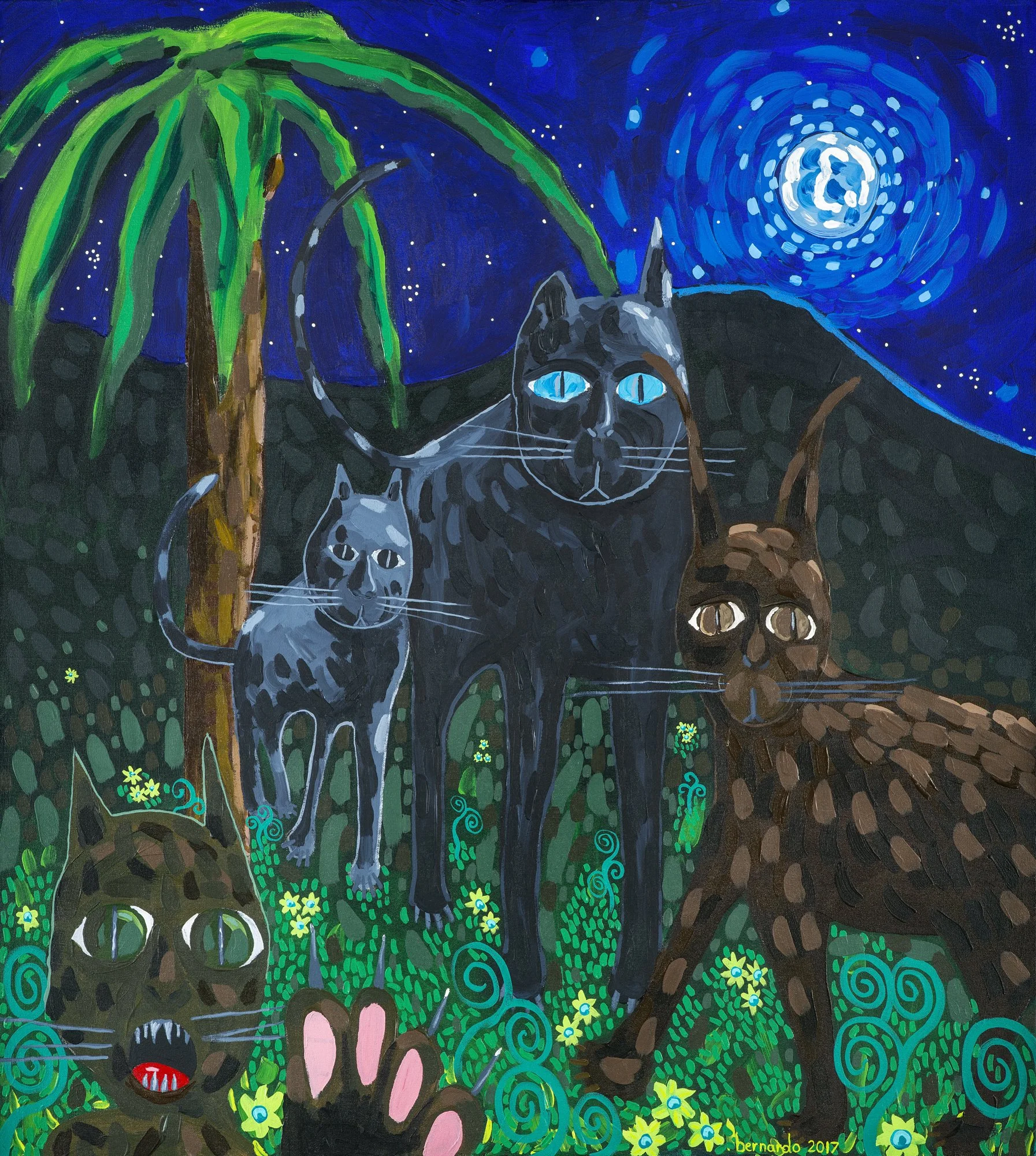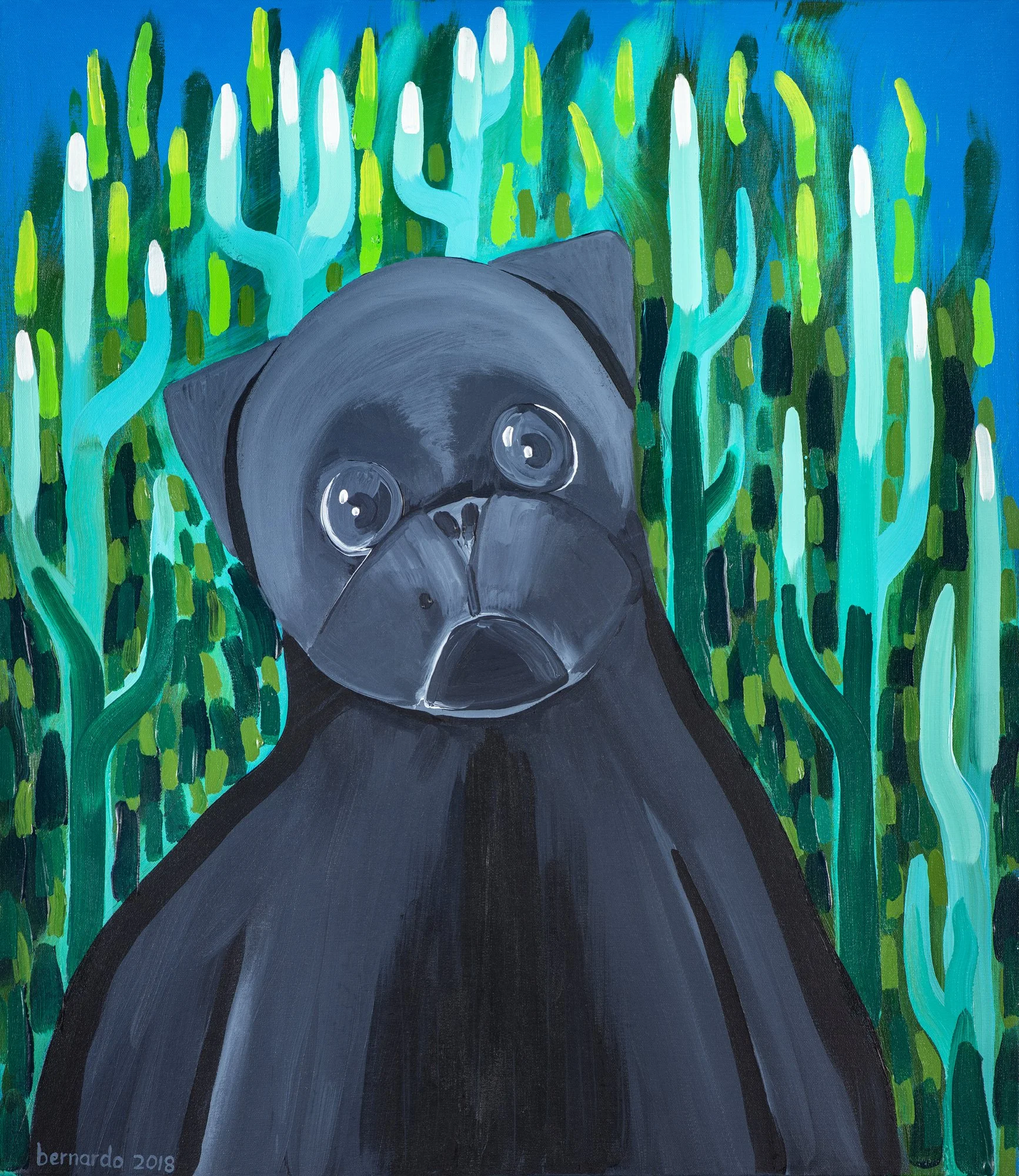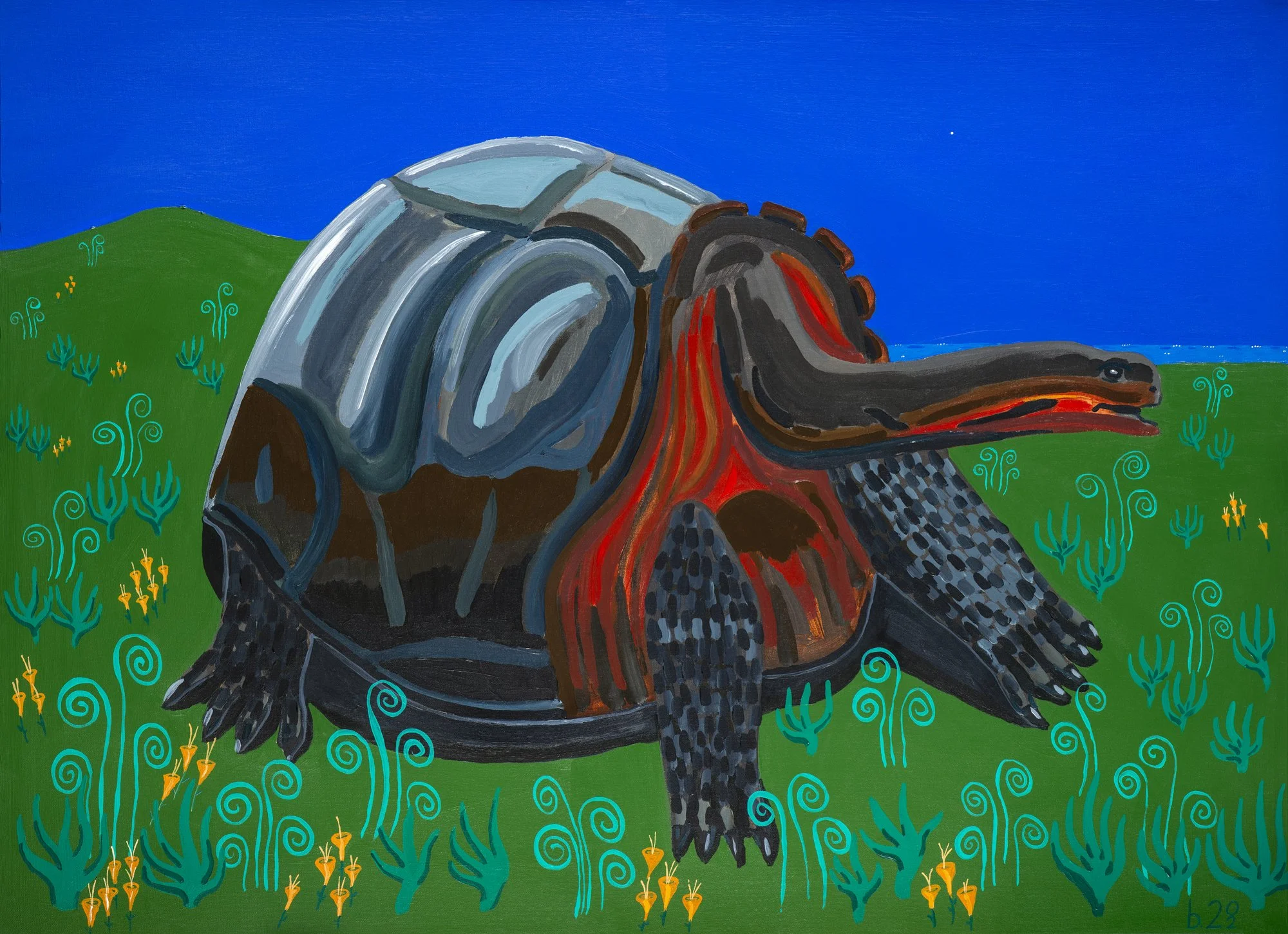Bestiary
Bestiary is pictorial series by Bernardo Falconi, who presents them as a way of renegotiating the relationship between humans and the animal world. In his canvases, Falconi finds a way of making the animal present in its splendor and autonomy as a corporality that equals that of the spectator, and that inherently criticizes the (ideological) dichotomy between man and nature and, therefore, between the human animal and the non-human animal.
The artist creates pictorial compositions that reveal the a priori vulnerability that animal existence (human and non-human) implies due to a corporality that is predetermined to be in intimate contact with the world. That intimacy is achieved through paintings of animal figures that affect the viewer on various sensory levels. For example: The figure of the turtle transmits the weight and gravity of its body, the elephant, and the jaguar the rhythmic movement and the friction of its bodies with the surrounding environment, also the stealth of the hunt. The tapir transmits the texture of its fur and its softness and at the same time, its existence in a continuous state of alertness. In this way, Bernardo describes a body that suffers from contact with internal and external forces, but also a body that resists and maintains its individual character. The (animal) body depicted in Darwin's theory of natural selection, is defined by the survival of the fittest as a reproductive success of the most adapted individual animal, race, or species. In opposition, Bernardo's animals do not adapt, they resist and therefore make visible the forces that affect them.
The gaze is another device present in Bestiary that makes possible an intimate contact between the viewer and the depicted animal figure. The animals that Falconi paints look back at the viewer; they are disquieting because when in their presence a gaze is felt upon the viewer. Although these works appeal to the viewer's sensitivity, they also appeal to a kind of equality and even to a (psychological) extrapolation between the viewer and the artwork. According to Jacques Lacan's film theory, animals are trapped in the gaze of the world where they are in it just showing themselves. The human animals have the capacity for action and differentiation due to their ability to understand the world as a representation of things as objects of the symbolic plane, therefore, humans can represent themselves as well. Man's ability to generate images is the ability to tame the gaze of the world, ceasing to be an object of the world to become an object for himself. Conversely, the look directed by the animals that Bernardo paints seems to have us as images, as objects of the painterly plain.
Bernardo’s ethics become visible in these paintings; the practice of pescetarianism and part of his artistic work are ways of rejecting the status of merchandise that has been granted to animals, inherently a firm repudiation to their brutalization, their use in hunting for fun, the experimentation with their bodies and their trafficking. The character of a sensitive and felt body and the positional extrapolation through the gaze that his paintings return, have an ethical-ideological background. The character of a sensitive and felt body and the positional extrapolation through the gaze that Falconi’s paintings return, have an ethical-ideological background: the relevance of animal life and the transversality of existence between humans and animals. Through art, Bernardo tries to question the dichotomy between man and animal and in turn asks us: Does not the rejection of animality make us more violent and aggressive than a wild animal?
Andrés Marcial Coba
Magnificent
1,00m x 1,40m
Acrylic / Canvas
2018
Amazingy. Lemurian yaguar
1,00m x 1,30m
Acrylic / Canvas
2018
Sirius
1,00m x 1,30m
Acrylic / Canvas
2022
Power
1,00m x 1,00m
Acrylic / Canvas
2018
Reckless
1,00m x 0,90m
Acrylic / Canvas
2018.
Cat Orgy
1,00m x 0,90m
Acrylic / Canvas
2017
Height
1,00m x 0,90m
Acrylic / Canvas
2018
Lucky. Ali chestnut hawk
1,00m x 0,60m
Acrylic / Canvas
2020
Big eyes Wisdom
0,80m x 0,80m
Acrylic / Canvas
2018
Going up
0,69m x 0,79m
Acrylic / Canvas
2018
Big Crest
0,80m x 0,70m
Acrylic / Canvas
2018
Tenderness
0,80m x 0,70m
Acrylic / Canvas
2018
Meeting with the beasts
0,60m x 0,70m
Acrylic / Canvas
2018
I am a rat
0,50m x 0,70m
Acrylic / Canvas
2018
Arachnophobia
1,87m x 1,50m
Acrylic / Canvas
2019
Big condor
0,80m x 1,10m
Acrylic / Canvas
2022
Vegetarians
0,80m x 1,10m
Acrylic / Canvas
2022
Regenerator
0,80m x 1,10m
Acrylic / Canvas
2022
Warrior
0,80m x 1,10m
Acrylic / Canvas
2022
Genetics of a laboratory
0,80m x 1,10m
Acrylic / Canvas
2022.
Urmah
0,80m x 1,10m
Acrylic / Canvas
2022
Andean
0,80m x 1,10m
Acrylic / Canvas
2022
Work
0,80m x 1,10m
Acrylic / Canvas
2022
Ruminant
0,80m x 1,10m
Acrylic / Canvas
2022
Porcine
0,80m x 1,10m
Acrylic / Canvas
2022

